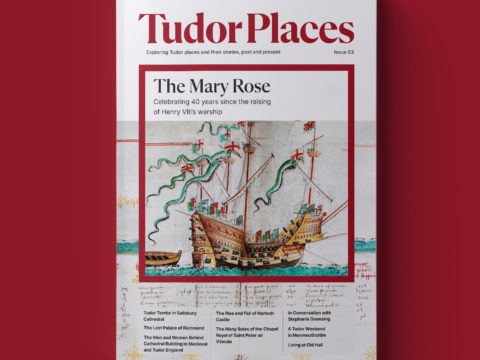Mary Queen of Scots: A Film Review
by Dr Linda Porter
Dr Linda Porter gives an historian’s view of the recently-released film, Mary Queen of Scots.
As someone who has written a book (Crown of Thistles: the Fatal Inheritance of Mary Queen of Scots) which looks at the wider rivalry between the Tudors and the Stuarts, I was naturally interested in the latest film version of Mary’s story. Though not without interest, and boasting a bravura performance by David Tennant as the Scottish firebrand religious reformer, John Knox, overall the film left me feeling curiously unsatisfied. It is not so much the historical inaccuracies, which, apart from the fact that Mary and Elizabeth never met, however much writers from Schiller onwards may have wanted them to, are less intrusive than might have been dreaded. Nor is it the performances of the two leads, Saoirse Ronan as Mary and Margot Robbie as Elizabeth, which are professional and even touching, though neither is entirely convincing, perhaps because of the screenplay. The Scottish scenery is stunning and the sense of period reasonably well conveyed, especially in the dark interiors of Scottish palaces in winter, though the hairstyles are decidedly odd and look more like something out of late Imperial China.
Overall, my reservations are largely about the lack of a coherent narrative that must make it hard for viewers who do not understand the complexity of Scottish politics in the mid-16th century to understand how Mary, a young woman, who is initially represented as strong and determined, can so suddenly lose her throne and make the ultimately fateful decision to seek sanctuary with her far from welcoming cousin, Elizabeth, in England. The film is really nothing more than a series of set-pieces disjointedly presented, with a fair amount of gratuitous sex and violence to spice it up a bit. Overall, it bears more than a little resemblance to Game of Thrones. Presumably this was intentional but it takes the film a long way from John Guy’s biography, My Heart Is My Own, on which it is very loosely based. The one area in which, as an historian, I did find something to cheer is the entirely unromantic portrayal of Mary’s relationship with that opportunistic thug, the earl of Bothwell. Mary is no fool for love (as John Guy had described her) here but a woman forced into marriage against her will.
The reactions that I have seen so far from other historians of the period are mixed. One of the most helpful was by Glasgow University historian Dr Stephen Reid, who gave a useful overview of how Mary’s story has been represented over the centuries. More controversial, I would suggest, is the comment (possibly quoted out of context) by the doyen of Scottish historians, Professor Tom Devine. He calls Mary ‘an insignificant historical figure’ which is even more dismissive than the late Jenny Wormald’s view of Mary as a study in failure. Though I can understand why many historians rightly challenge the over-emphasis which television and popular history have put on the personalities of kings and queens, at the expense of understanding the wider social and economic context in which they inevitably functioned, it cannot be right to call Mary insignificant. True, she only ruled directly for six years in Scotland, but her reign, despite her efforts to hold her fractious nobles together, led to civil war which plagued Scotland for years. And surely her main significance is to be seen in the wider European context. Her presence as a prisoner in England made her a focus for Catholic discontent within and foreign interference from outside. It is no coincidence that the Spanish Armada, the greatest external threat to Elizabeth I, was launched a year after Mary’s execution.
Mary Queen of Scots may not be good history or even a very good movie, but I hope it does inspire those who would like to know more, and are open-minded, to read more about her. One critic called it ‘soft porn for the Instagram generation.’ This is somewhat harsh, but contains more than a grain of truth. And I do fear for a balance understanding of history in the age of alternative facts. Coming out of the cinema I met a lady (definitely not of the Instagram generation) who asked me what I thought of the film and whether it was historically accurate. I mentioned the fictional meeting between Elizabeth and Mary which never took place. She bristled, demanding: ‘how do you know it never took place?’ I must admit to being temporarily floored by this question since I myself would not challenge someone who has just told you that they have written a book on the subject of the film. Perhaps I come from a time when people were more deferential. I told her that there was no record of such a meeting ever taking place and that Elizabeth had consistently refused to meet Mary, indeed, it would not have been in her interest to do so. She still seemed to think that, in an age when monarchs couldn’t even use a toilet in private, it might have been possible for two queens to hold secret meetings that no one could have known about. So I appeal to all readers of Tudor Times to consider seriously the well-worn statement that the past really is a foreign country and they did not have social media there.








